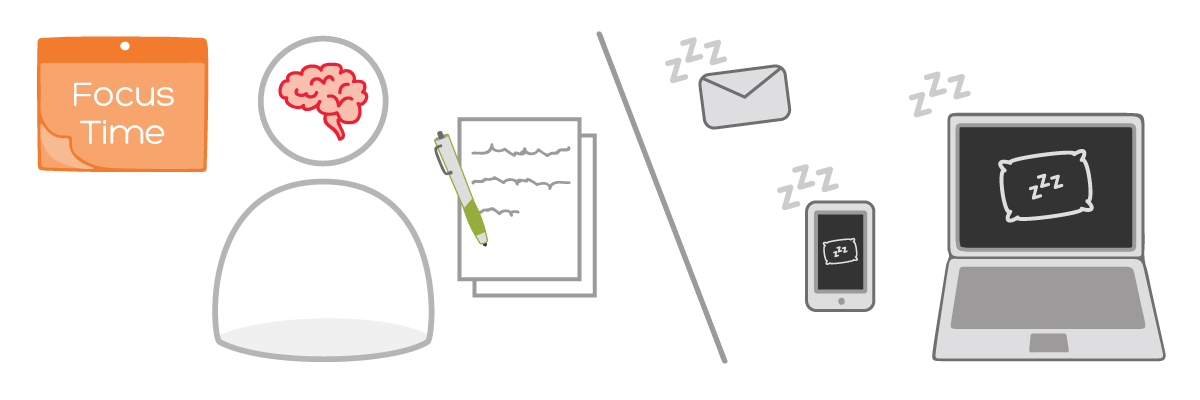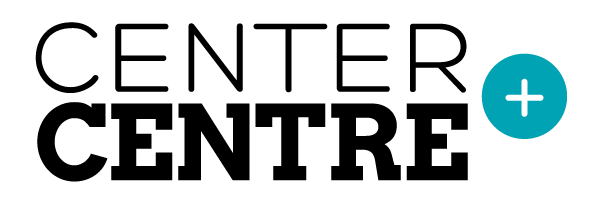
Have you ever tried to hold a conversation with someone in person while you’re replying to a text message on your phone? Have you ever sat in a work meeting, held your phone under the table, and pretended to listen while someone else is talking? Have you ever brought your laptop to a work meeting thinking that you’ll check email while you participate in the meeting?
If you answered “yes” to any of these questions, you’re not alone. (I answered yes to all of these questions myself.) What we often forget (or ignore) is that multitasking is ineffective. Human beings aren’t wired to do multiple things at once. We may think we’re being effective when we attempt to do many tasks at one time, but we’re not. When we do multiple things at a time, we do them slowly and poorly.
At Center Centre, we designed a learning environment and a culture that supports being present and being productive. We focus on one thing at a time. We focus on that one thing—and get it done right. We plan our schedules so that we don’t rush around at the last minute. We block off time on our calendars each day to get specific tasks done. And lastly, and perhaps most surprisingly, we have tech-free meetings. That’s right—tech-free meetings. No laptops, no phones, no tablets. Nothing that beeps or buzzes comes into our meetings.
We focus on one thing at a time
I’ve always been a planner. I’m a high C on the DISC model, which means that I’m detail-oriented and task-driven. Even though I was planning my work and keeping on top of my tasks, it wasn’t until I worked at Center Centre that I realized my old work habits weren’t very effective.
At previous jobs, I attended meetings with my laptop. I checked email and Basecamp during most meetings, stopping now and then to pay attention to the meeting. I thought I was being productive, but I now realize that I wasn’t productive at anything. I was halfheartedly doing three things—checking email, checking Basecamp, and participating in the meeting—instead of being fully present and engaged in one of those things.
Now, I work very differently. I don’t try to do multiple things at once. For example, while writing this article, I set aside writing time on my calendar. I turned off notifications on my laptop. I left my phone in the other room. I minimized all other tabs in my browser. I focused on writing while I was writing.
Focusing helps me write content effectively and quickly. In one hour, I listed my goals for this article, wrote a rough draft, created a reverse outline, edited my rough draft, found links to external articles to support the points in my draft, and sent my draft to our co-founder, Dr. Leslie Jensen-Inman, for review.
Tech-free meetings
When I first started working at Center Centre, I couldn’t believe our meetings were tech-free. I had never heard of such a thing. I was incredulous. I thought to myself, “No laptops? How am I supposed to take notes?”
Now, I understand why we have our tech-free meetings rule. I embrace this rule. I can’t imagine going back meetings with phones and laptops that constantly distract us.
When I’m in a meeting, I’m focused on the meeting. I’m listening, I’m contributing, and I’m learning. I’m respecting other people’s time by being fully present. I’m following the printed agenda. (All of our meetings have detailed agendas.) I’m taking notes by hand, which is much more effective than taking them on a laptop. After the meeting, I photograph my notes and add them to Evernote so that I have a digital reference for later.
We do make some exceptions to our tech-free meetings rule. For instance, if someone joins the meeting remotely via Skype, we need to use a laptop. If a staff member is waiting on an important call from her physician, that staff member can bring her phone to the meeting.
Center Centre’s meetings are productive and enjoyable. Everyone leaves knowing what we discussed, what we accomplished, and what our next steps are.
Shaping students into productive professionals
We’re excited to teach our students how to be productive professionals. Students will learn how to schedule time on their calendars to get their projects and activities done. That way they’re set up to focus on one thing at a time, rather than trying to juggle three or more things at once. Students will participate in tech-free meetings, and they’ll experience how productive and useful a meeting can be without constant distractions.
Students will graduate from Center Centre as well-rounded, junior UX designers, and they’ll know how to maximize their time and energy on the job. They’ll be an indispensable asset to the UX team they join.
Apply to be a student
Do you see yourself as a student with Center Centre? Apply today to become a lifelong learner. Do you have friends or family members who would make great students? Please tell them about us. We look forward to hearing from them.


